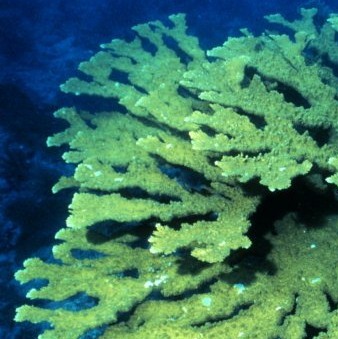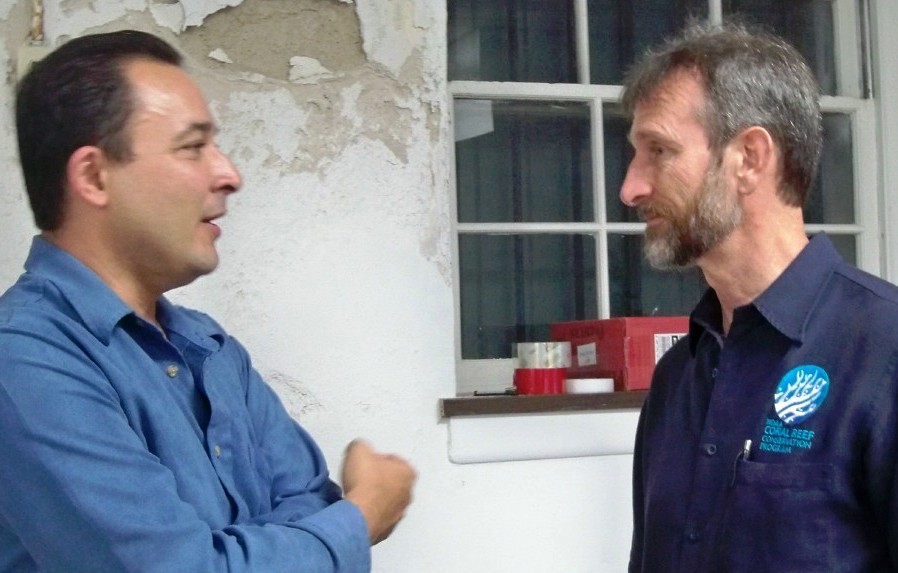
 You know you are in a desperate situation when the best thing that can happen to you is a hurricane, but that is one point that came out about coral reefs in Zandy Hillis-Starr’s presentation Thursday at the National Park Service old post office, Coral Bleaching in Times of Climate Change and Local Effects in the USVI.
You know you are in a desperate situation when the best thing that can happen to you is a hurricane, but that is one point that came out about coral reefs in Zandy Hillis-Starr’s presentation Thursday at the National Park Service old post office, Coral Bleaching in Times of Climate Change and Local Effects in the USVI.
Hillis-Starr, chief resource manager for NPS, explained that the difference between the Virgin Islands’ two recent major coral bleaching events were storms.
In the 2005 bleaching event, the sea temperatures stayed critically high for 56 days and coral that suffered from bleaching (turning white) had a high mortality rate – 90 percent.
In the 2010 bleaching event, the water temperatures stayed high for less than half that number of days because major rain events came through the region cooling the sea.
Another positive note in the otherwise bleak outlook for the future of coral came in the presentation by Mark Eakin, National Oceanic Atmosphere Administration Coral Reef Watch coordinator, who shared the podium with Hillis-Starr.
Eakin said there were some signs that corals were adapting to warmer waters, but he was cautious. “There is some adaptation going on, but it’s just not keeping up with the changes in sea temperatures. The coral is trying; we have to try too.”
What Eakin referred to is the rising level of carbon dioxide that humans are putting into the atmosphere causing climate change.
“We need to do a lot, and so far we aren’t doing much,” Eakin said. He went through the projected scenarios the International Panel on Climate Change has modeled. If the world begins cutting its emissions of carbon dioxide, he said we would still have some coral reefs at the middle of the century. However, because of the perceived economic benefits of using fossil fuel, most nations, led by the example of the United States, have taken few meaningful measures to cut fossil fuel use.
Eakin said that some scientists believe that for coral reefs to survive, the content of carbon dioxide should be leveled off between 320 and 350 parts per million. Recent readings of carbon dioxide in the atmosphere have been as high as 400 parts per million.
Eakin said that he would be happy if the carbon dioxide content in the atmosphere could be stabilized where it is now. Although the speakers acknowledged carbon dioxide was the problem, no mention of how that could be cut was mentioned.
In the audience were several federal officials who could possibly play a role in that reduction since the presentations were part of the U.S. Coral Reef Task Force visit to St. Croix.
About 20 of the 60 people in the audience were from the Task Force. The Task Force was formed in 1998 to protect reefs. Each year, the USCRTF meets in one of the seven coral reef jurisdictions (USVI, Puerto Rico, Florida, Hawaii, Guam, American Samoa and the Northern Mariana Islands). This was its first visit to St. Croix since 1999.
Olasee Davis, a member of the audience and professor in the Natural Resources Program in the Cooperative Extension Service at the University of the Virgin Islands, said there is always hope.
“With the presence of man or not, our natural resources will try to survive,” Davis said. He added that in the Virgin Islands we tend to pay lip service and generally put economics at the top of everything.
On Friday from 9 a.m. to 4:30 p.m. the Task Force will hold its annual business meeting at UVI St. Croix Campus Great Hall. The public is invited.